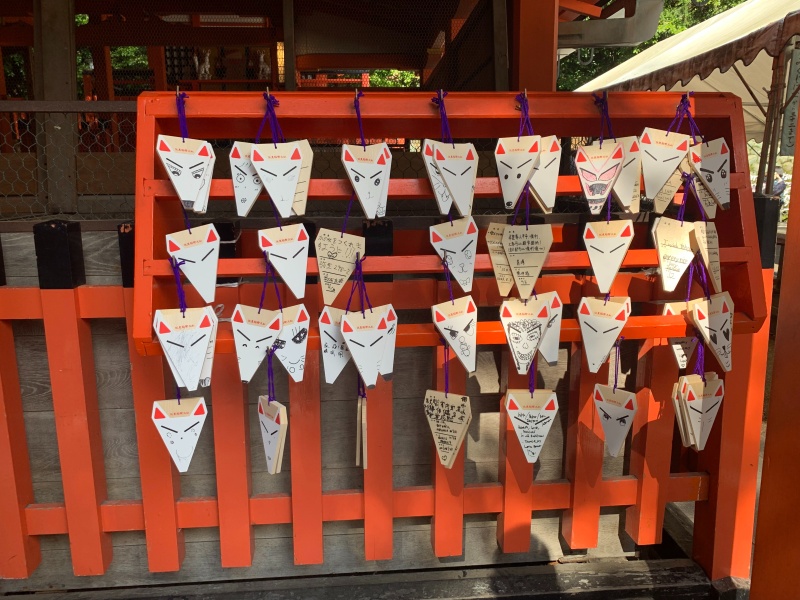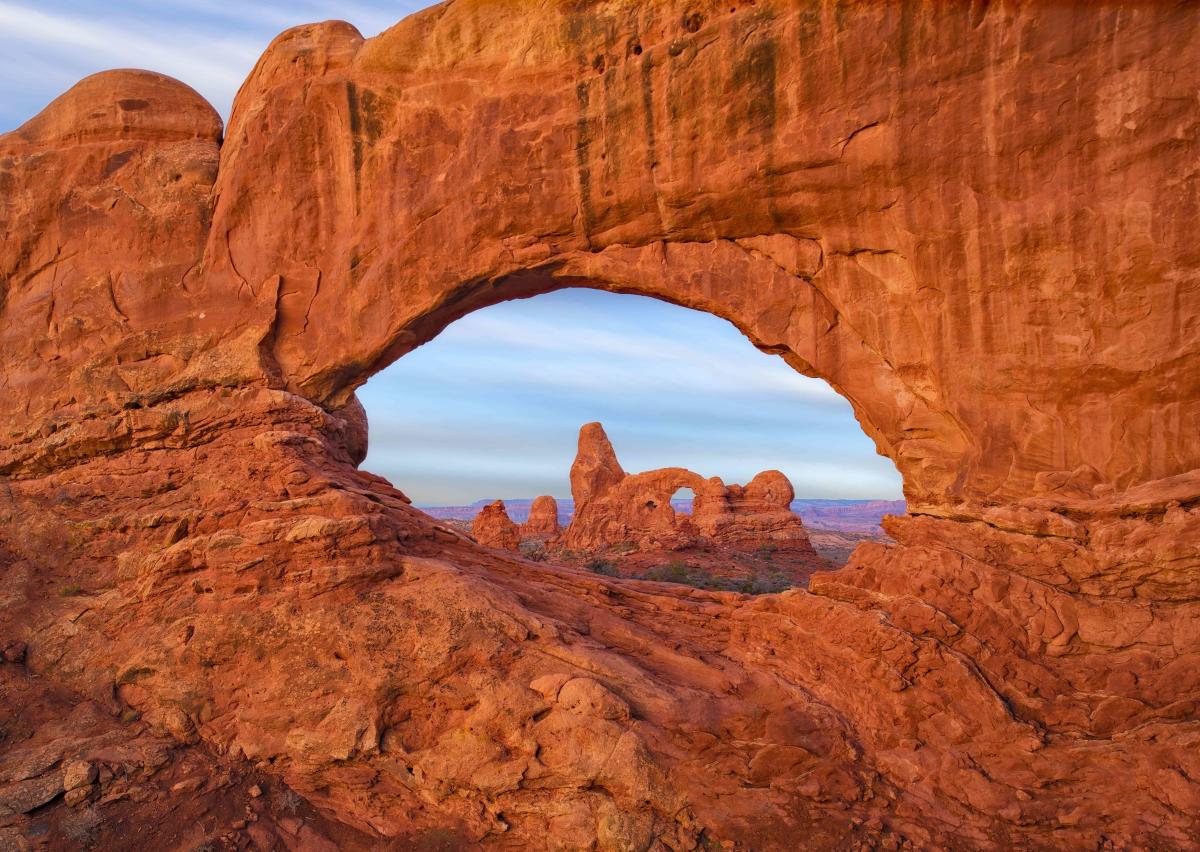Fushimi Inari Shrine – Everything you need to know!
7 min read
Table of Contents
Arguably amongst Japan’s most popular and viral destinations, the Fushimi Inari Shrine is as much a religious site as it is a serene nature escape in southern Kyoto. Famous for its bright vermillion torii gates that lead visitors up Mount Inari, the shrine is an iconic representation of Japanese culture ingrained in tradition and spiritualism.
Mount Inari, which lies at the heart of the shrine, stands 233 meters tall and is sacred, belonging to the shrine grounds. Historically, Fushimi Inari was dedicated to the ancient rice god, Inari, in the 8th century by the Hata clan. It claims the highest rank of all the Shinto shrines and is the main Inari shrine out of more than 30,000 spread across the country’s diverse landscape.

How to reach Fushimi Inari Shrine
The shrine’s location just outside the JR Inari Station makes it relatively easy to reach.
The JR Inari Station is the second station from Kyoto across the JR Nara Line, which takes around five minutes to reach.
Alternatively, one can take the Keihan Main Line to Fushimi Inari Station, a short walk from the shrine’s main entrance.
Facts about Fushimi Inari Shrine
Mount Inari’s climb is a cornucopia of interesting sights, from smaller shrines embellished with mini torii gates to stray cats that often attract a far more enthusiastic following than the shrine itself.
The region also has numerous fox-themed statues, cut-outs and souvenirs. This is because foxes are known to be Inari’s messengers. Most shrines in the area, including the ones higher up on the mountain, have two fox statues near the gates.
Approximately 10,000 torii gates make up the route from the bottom of the mountain to the top.
Moreover, the famous torii gates are all donations from individuals or businesses. They cost anywhere from Yen 400,000 for a small gate to Yen 1,000,000 for a larger one.
This unique custom started in the 1600s when people began donating a torii to have a wish come true or show gratitude for an already granted wish. The names of the donors are carved in black on each pole.
The shrine is a famous film location, appearing in movies such as “Memoirs of a Geisha” and the anime series “Inari, Konkon, Koi Iroha”.
The Fushimi Inari region is open 24/7 and boasts an impressive sight at night with illuminated torii gates and walkways.

Fushimi Inari Shrine – What to expect?
When heading up the torii gates, you pass a couple of shrines, worship gates, and shops that sell souvenirs and fox-related items. We opted to browse for a few minutes before heading up.
At the start of the hike, there are two rows of torii gates named Senbon Torii. The title translates to “thousands of torii gates.”
The rows are parallel and end up at the same point, but we found that, in general, the one on the right was used for going up, and the one on the left was for people coming back down.
We got lucky and spent around 5 minutes taking photos in this part of the hike. There weren’t many people coming back down, so the left side was empty for tourists such as us to take pictures.

After the Senbon Torii, there is a small square with yet another shrine and a wall with multiple wooden fox heads. We saw some people writing on these (wishes, I assume) and then hanging them on the shrine.
The climb to the top and back has several spots from where you can turn back. We made it more than halfway up the mountain before turning back as we had planned other activities for the day.
However, the climb is easy, especially in cool weather. The shade of the trees also helps.
The round trip takes roughly three hours at a leisurely walking speed. Moreover, the climb is not too steep, and you’ll find plenty of places to stop, rest, and eat along the way.
Things to do near Fushimi Inari
The shrine’s base is typically the most crowded area, buzzing with all types of activity.
There are opportunities to have your future told, give donations, try out delicious Japanese street food, buy souvenirs, enjoy excellent photo options, and take in the region’s vibe.
Not to miss out are several cafes, restaurants, and street food stalls that line the alleyways next to the shrine’s entrance.
While walking around, we tasted yummy ice cream, freshly squeezed orange juice, and a specialty rice cracker with a torii gate imprinted on a nori wrapper.
You’ll mainly find all of the above along Fushimi Inari Sando Shopping Street.
This pathway leads you to the station and features a range of eateries serving delicacies such as fried tofu, Inari-sushi, mochi, amazake – fermented rice drink (found at Fushimi Inari Shrine-Chaya), senbei – fortune cookies, and fox-shaped rice crackers from iconic shops like Sohonke Sogyoku-do and Matsuya.

Places to eat near Fushimi Inari Shrine
Kyoto has a fantastic cafe culture, and you’ll find some of the best around Fushimi Inari Shrine. The Vermillion Cafe, named after the color of the torii gates, is a popular haunt.
Other cafes and restaurants near Fushimi Inari Shrine worth visiting include;
Kanmidokoro Takeya
A teahouse of sorts, Kanmidokoro Takeya, is located on the mountain and is popular with people wanting a short respite before continuing their climb. Serving drinks, matcha cakes, ice cream, and an assortment of snacks, the cafe boasts spectacular views and delectable food.
Oshokujidokoro Inafuku
Inafuku serves excellent local delicacies such as roast quail, Inari udon, tempura udon, and Inari sushi. Their exclusive menu is what draws the crowds, and the hot dishes paired with a cold beer make for a refreshing meal after a walk-up Mount Inari.
Fushimi Inari Sando Chaya
One of the best places to relish a snack before or after your visit to the shrine, Fushimi Inari Sandi Chaya is famous for its ambiance and classic Japanese desserts. The shaved ice and mochi are the most popular deserts, but the matcha parfait is a close second.
Gyukatsu Kyoto Katsugyu
If you are craving juicy and tender Wagyu, Gyukatsu Kyoto Katsugyu is arguably the best place to eat near Fushimi Inari Shrine. The restaurant has a cozy Japanese atmosphere and serves a delicious gyukatsu – beef cutlet that you can cook to your liking on the table.
The restaurant only uses premium beef and extra thin panko, recommending that you enjoy the cutlet medium rare for the best taste. And while you’re at it, don’t forget to try their matcha beer.

Tips for Fushimi Inari Shrine
If planning to hike to the top, wear good walking shoes and carry plenty of drinks. While the walk uphill isn’t challenging, having these two items will make it more comfortable, especially on a hot day.
When visiting Fushimi Inri Shrine it is best to reach in early morning hours or late in the evening. During the daytime, you can expect larger crowds, making it difficult to take photos without anyone else in the frame.

However, if visiting in the afternoon, a little-known tip is to head higher up the mountain. As you go up, the crowds tend to diminish. Still, to avoid large crowds, the best time to visit Fushimi Inari is before 9 AM and after 5 PM.
Stop at the food stalls on the way! You will find everything here, from great coffee and street snacks to skewers, ice cream, shaved ice, and more.
Set aside some time to explore the neighborhood around the shrine. There are beautiful spots, such as a railway crossing, where you can capture unique photos.
Things to know about Fushimi Inari Shrine
Is there an admission fee?
No! Entry into the Fushimi Inari shrine is entirely free.
What are the opening hours for the shrine?
The Fushimi Inari Shrine is open 24/7, 365 days a year. However, keep in mind that the nearby shops and restaurants are open only from around 9 AM to 5 PM.
How long does it take to walk up to the Shrine?
If you are going at a steady/slow pace, it will take around 2 – 3 for the round trip.
Should you plan to stop and visit the various shrines and take pictures, it would lean slightly more towards the 3-hour mark.
Is Fushimi Inari Shrine safe at night or early in the morning?
Yes! We found Japan to be highly safe throughout. Although we visited the shrine during the daytime, people often come here early in the morning or late at night.
One should always take general safety precautions, but overall, it is incredibly safe.
What should you wear at Fushimi Inari Shrine?
At the end of the day, the shrine is a religious place for the locals and should thus be respected. Although there is no dress code as such, one should wear respectable clothing when visiting.
Please remember that the shrine is not a place to take wedding or costume photos. The shrine is, nevertheless, a great place to see wearing a kimono.






